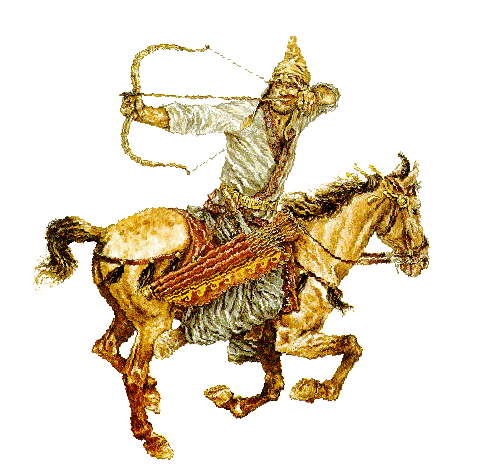 |
 |
This painting illustrates the tactic.
Some mounted archers carried more than one hundred arrows.
Click on the image to enlarge it, and note the following: bow held in right hand, while left hand has fingers down, bow drawn by the thumb, arrow on the left side of the bow. This is the Steppe method used by the Scythians, from whom the Parthians derived.
The modern archer - meaning, at least as far back as the English Longbowman - holds the bow in the left hand, draws the string with 2 (or 3) fingers of the right, holding the tip of the index finger at the corner of the mouth. Shaft is still on the left. |